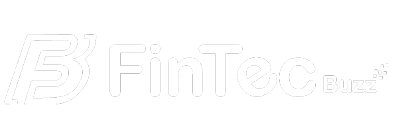From content management to enterprise collaboration, discover how Colligo Networks is revolutionizing the FinTech landscape with CEO Tim Brady at the helm.
Tim, please give us a brief overview of your career so far.
I like to say I grew up at a bank. I began my career with RBC Capital Markets in Canada, and my time there really set the foundation for what I am doing today. I was able to see how a large enterprise, and bank in particular, works and spent most of my time there focused on the software sector. This led me to a leading Canadian hedge fund, where I was given the opportunity to invest in software companies for several years. I spent an immense amount of time focused on the Enterprise Content Management (ECM) space. Ultimately, I was able to identify the opportunity for Colligo and build the vision of what Colligo would become, given both the secular and structural shifts taking place in the content and collaboration market at the time.
What are your areas of expertise? Where do you enjoy applying your knowledge the most?
I enjoy building. Whether it’s building out our amazing team, from sales to marketing to product, building out our partner channel, or building out our internal systems and processes. We’re building something truly remarkable here at Colligo and that’s what I am most proud of. To do this with an all-star team every day in the trenches makes it an incredible journey. While my background may be on the strategic, finance, and sales side, and those are the “comfort” areas for applying my knowledge, I’ve enjoyed the challenge of working with our leaders in other areas to bring actionable insights and value to the table.
Tell us about Colligo and its distinct set of services. What are its USPs?
At Colligo, our unique selling proposition is providing the best cloud-based email management solution and document management solutions for Microsoft 365 on the planet. We spend every day thinking about and working on how to solve our customers’ problems in these areas. Enabling you to manage your records in place and in the apps you are already working in — whether it’s Outlook, Teams, the other Office Apps — we make information governance and collaboration much easier and seamless.
How do financial institutions manage content compliantly in the cloud?
Financial institutions are heavily focused on balancing collaboration with information governance and compliance right now. Colligo’s applications allow organizations to better govern their information and data, while not inhibiting collaboration. The cloud is meant to be collaborative, and creating a way for financial institutions to leverage this while remaining compliant, is a core focus for us. I believe that’s why we’ve been so successful with large financial institutions over the past several years.
How financial institutions can leverage their existing investments in Microsoft 365 to achieve increased compliance and user adoption and reduce costs?
Doing more with less. Adding Colligo’s software enables information governance/records management and drives the adoption of the software you already own. Most financial institutions are not realizing the ROI they should be from their investment in Microsoft 365 due to under-utilization and low user adoption. We change that.
With Colligo, financial institutions don’t need to move their data to another repository. They can keep it in SharePoint or begin using Microsoft SharePoint more deeply as the designated repository, while still getting the functionality required for their knowledge workers to actually use it. Utilizing the functionality within Microsoft 365 alongside Colligo, and some of the Microsoft-built add-ons like Microsoft Purview & Microsoft Syntex, financial institutions get a robust records management and information governance solution. And they get more from the software they are already paying for.
If you could mention one of your client’s success stories, which one would it be?
We are working with a large asset manager out of the UK. Originally, they were focused on storing emails about assets in respective SharePoint locations in their repository. We were able to save workers minutes with every email filed, while also making the organization as a whole more compliant and on track to a better records management strategy. Fast forward a year later, and they asked us, how can our team better view and manage their documents.
We want to replicate the network drive experience. Lo and behold, our content management application (a Document Management System) did just that – provided the look and feel of the way people wanted to work, while still allowing them to have all the document management functionality required and keeping information protected, labeled, and safe. The user adoption increases the organization saw was amazing, as was the ROI. This is what we want to replicate and provide to financial services organizations everywhere.
What practical steps can financial services organizations take to improve return on investment, lower risk, and efficiently capture and manage content?
Every financial services organization can look to designate a centralized repository, or system of record, for business records and content for collaboration purposes. This eliminates the duplication of multiple repositories, sometimes known as ‘shadow IT,’ when not properly provisioned, and can make the organization as a whole more efficient and productive. This also lowers risk drastically, as information governance is improved.
The next question commonly becomes, well, how? In our view, this takes management buy-in in order to select the system of record, provide policies and rules around capturing business records and tribal knowledge to the organization in the designated repository, and equip the users with the tools to manage and work with their content and documents. Microsoft provides the infrastructure to do all of this. But Colligo completes the picture, by making SharePoint usable for end-users. We also balance security and ease from an IT perspective, while enabling better info governance practices across the organization from a records or knowledge management perspective.
What are the true costs of non-compliance? What can be the best defense for organizations?
The costs of non-compliance with a policy or regulation can be huge. It really varies by industry, but the financial services industry carries some of the greatest penalties for non-compliance. There have been many stories in the news lately of financial institutions being hit with severe fines, facing legal challenges, and suffering reputation damage for non-compliance. There are regulations around labeling certain documents with metadata, strict retention requirements, and so on. Outside of those organizations more heavily regulated, it can be a policy at an organizational level, to prevent e-discovery issues, or just to capture and maintain important documents for the organization – all of which can be made much easier by using the right applications.
How do you plan to scale Colligo’s operations in 2023 and beyond?
Historically, Colligo has been a leader in connecting email to SharePoint or Outlook to SharePoint and providing organizations with a dependable, scalable, and easy-to-use solution for that. We’ve evolved over the last couple of years, continually strengthening our value proposition, and now provide a document management system for our clients. We like to call it a ‘lightweight’ document management system, because it’s the application or interface layer, but still keeps your documents in your core repository, SharePoint, and makes it easy to use. This has opened up a whole new market for us as we displace some of the legacy document management systems out there. It also allows organizations running Microsoft 365 and SharePoint to derive more value and ensure greater compliance and user adoption. In the ‘year of optimization’ that 2023 is looking like it will be, this is extremely important.
Beyond this, Colligo is planning more product offerings and strategic partnerships to offer a more end-to-end solution for our clients. We’ll continue to scale with our customers and deliver on what they need us to bring to the table. I perceive the US and Canada to continue to be our strongest growth markets.
What are your go-to resources for staying updated on the latest developments in the industry?
I’m a voracious reader, so my list can be quite extensive. My morning docket generally consists of the Wall Street Journal, the Globe and Mail (up here in Canada), and industry blogs and forums. I’m continuously reading research reports and white papers to formulate ‘where the puck is going’ and keep on top of the latest industry trends and developments.




